Men’s Journal aims to feature only the best products and services. If you buy something via one of our links, we may earn a commission.
Temptation comes in many forms: money, power, sex, extra bacon…. Different things tempt different people, but whatever your vice, there’s never any shortage of good reasons to make bad decisions. The folks at Kawasaki just gave us another one: their new 250-horsepower Teryx H2, the most powerful production side-by-side ever built.
Like splitting a pair of kings at the blackjack table or borrowing a police cruiser for a harmless joyride, there are moments when the potential for a good time overrides our better judgment. In the case of the Teryx H2, it was Kawasaki’s decision to add an intercooled supercharger to their 999cc four-cylinder engine.
At least that’s what I seem to remember thinking as I watched the speedometer creep toward 90 miles an hour with a wide-open California desert in front of me. “After all… why not? Why shouldn’t I see how much faster this thing goes?” According to Kawasaki, the answer is “Quite a lot.” Rumor has it this big green monster’s top speed is somewhere in the neighborhood of 110 miles an hour.
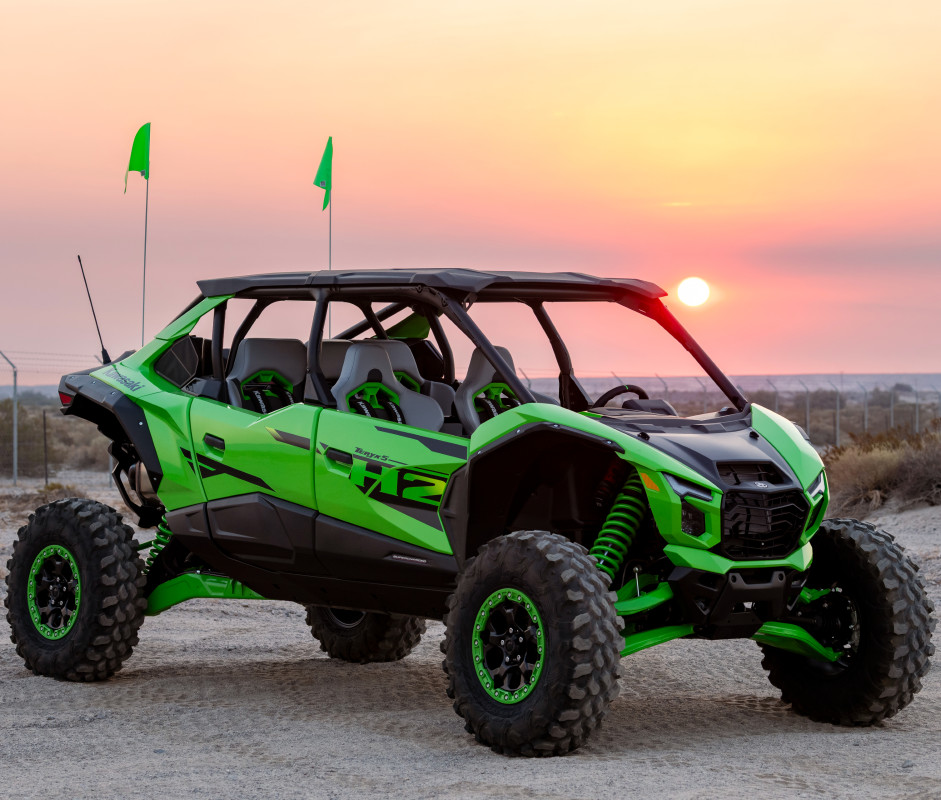
Logan Gallagher
I’m not ashamed to say that better judgment got the best of me after seeing 93 mph on the dash. The engine was screaming at 9,000 rpm, the whine of the supercharger was egging me on to leave the pedal glued to the floor, yet somehow I came to my senses shortly before I ran out of talent.
It wasn’t blowing through three-foot whoops at 70 mph, drifting around corners like physics were on vacation, or sending all four wheels into the air over a blind drop off. No, it was going flat out with no signs of slowing when I finally realized that this machine did, in fact, have more to offer than I could ever hope to utilize.
The Teryx H2 is truly a testament to just how far UTVs have come in recent years. The thing is just built so well, so loaded with tech, so incredibly well sorted that even an average Joe like myself can simply point it at anything, put the gas pedal on the floor, and somehow come out completely unscathed on the other side. And, after spending a day behind the wheel, I think I finally understand how Kawasaki did it.
Related: Kawasaki’s 2025 Z900 SE Is Their Best Version of a Streetfighter Yet
Chassis & Suspension
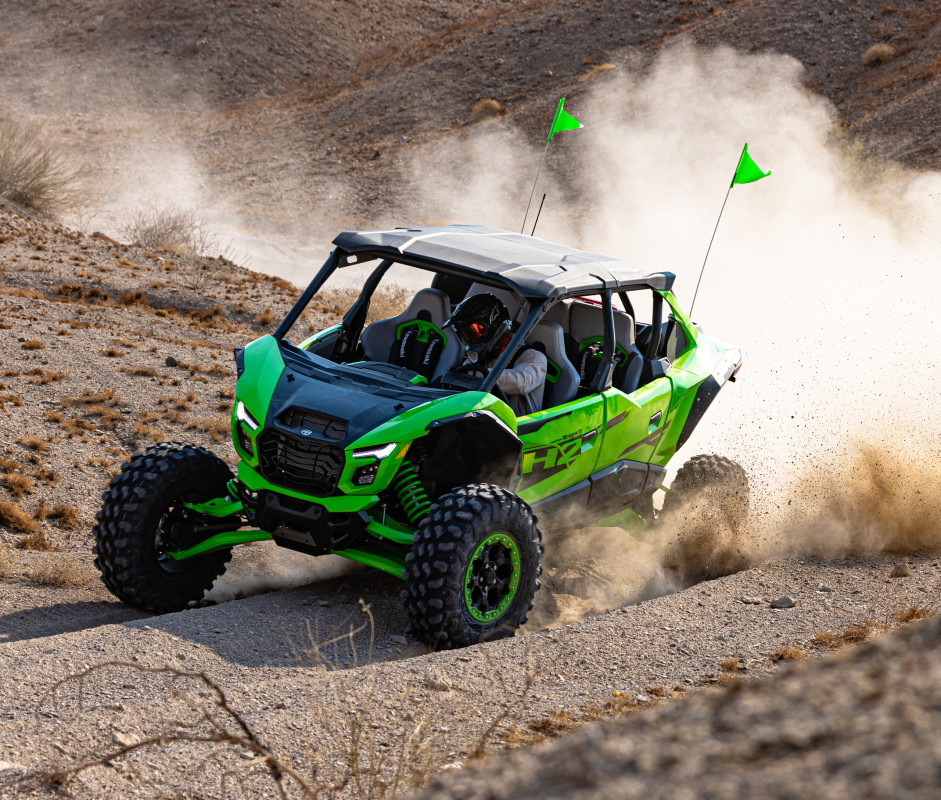
Justin Coffey
Power is great, but Kawasaki knows better than most that if you’re gonna build an insanely fast machine, you’ve gotta back it up with a chassis that can handle it. The Teryx H2 has that in spades.
One look at the H2’s massive front A-arms and you know this thing means business. Unlike your standard Maverick or RZR, which utilize tubular steel A-arms, the Teryx H2 sports the same sort of fully-boxed A-arms you’d expect to see on a modern-day trophy truck. The same goes for the rear trailing arms, which sport a 4-link design to keep the H2 tracking as straight as possible at triple-digit speeds.
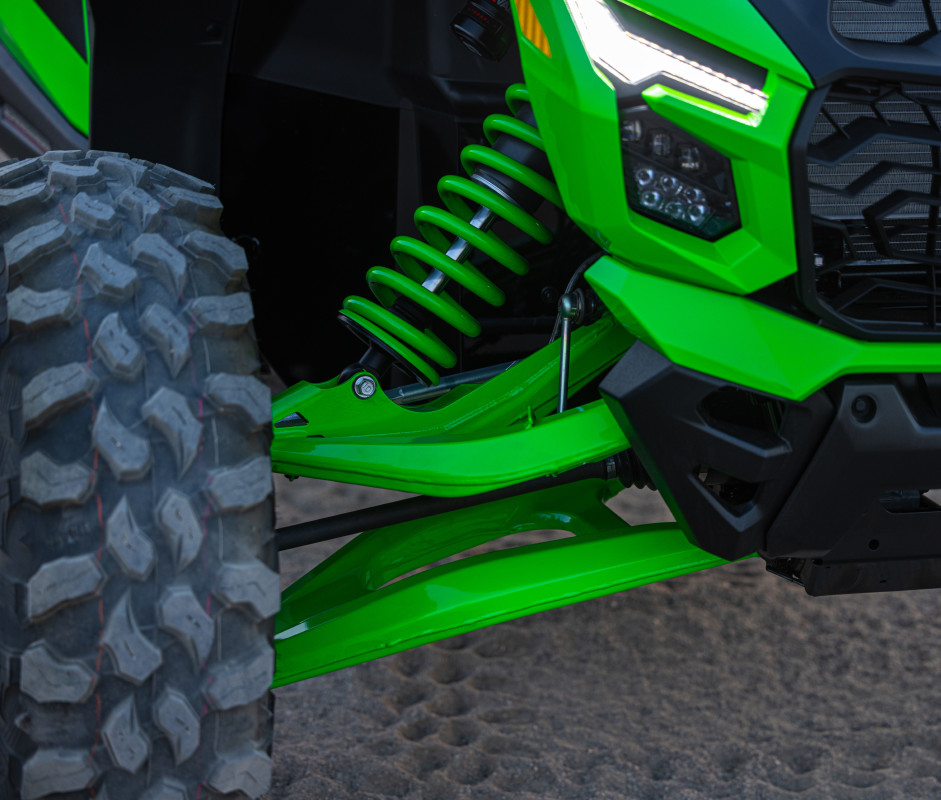
Justin Coffey
And then there’s the suspension. On all four corners of the vehicle, you’ll find Fox Podium 3.0 internal bypass shocks, the brand’s latest and greatest for the powersports industry. Working together, these components deliver a full two feet of suspension travel to great effect.
And that’s just on the base model. Step it up to the Deluxe eS trim I tested, and you also add Fox Live Valve technology to the mix, which is backed up by Kawasaki’s outstanding KECS (Kawasaki Electronic Control System) technology.
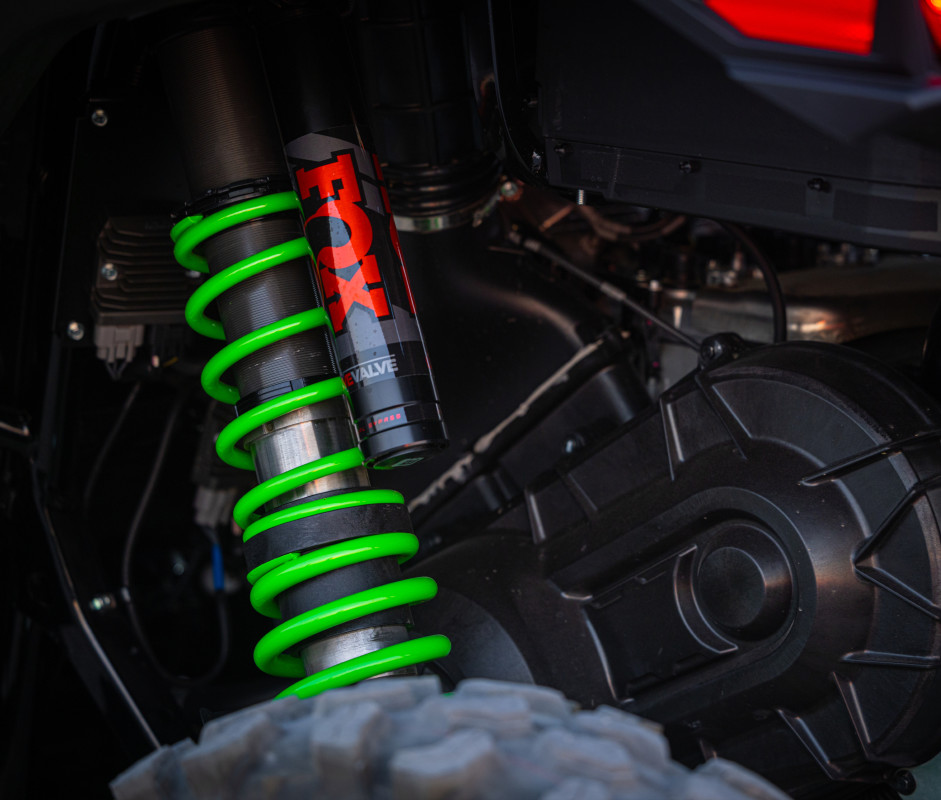
Justin Coffey
If you’re not familiar with KECS, it essentially takes a reading from the shocks, engine control unit, steering angle sensor, and the rider’s mode selection several hundred times a second, and then automatically adjusts the damping of all four shocks to best match the driving conditions. Kawasaki says they even went so far as to add acceleration sensors to the base of the shocks, which deliver 40% faster responses than previous iterations.
In other words, the Teryx H2 knows what you’re doing at all times, whether that’s creeping through rocks or flying over whoops, and it’s constantly optimizing all two feet of its suspension for the plushest, most controlled ride possible. Heck, the KECS Live Valve setup even knows when all four tires leave the ground, instantly firming up the ride so jumps land drama-free.
All the Power, All the Time
Before we get too far from the star of the show here, let’s take a moment to appreciate just how good this 250-horsepower engine really is. Compared to the previous record holder, Can-Am’s Maverick R Max, the H2 makes an extra 10 ponies, and then applies it to a rig that weighs 300 pounds less.
Kawasaki’s choice of a supercharger over the industry standard turbo also carries some unique benefits of its own.
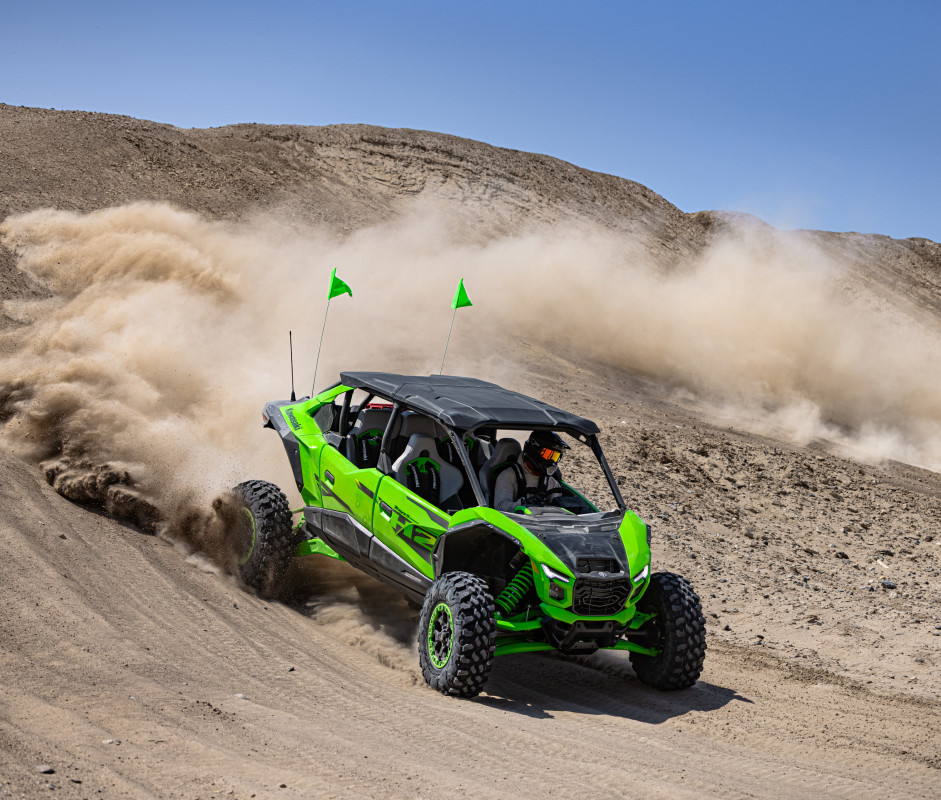
Justin Coffey
For starters, because a supercharger runs directly off the engine rather than the hot gases from the exhaust, there’s zero turbo lag to speak of. What you ask for with your right foot is what you immediately get, whether you’re starting from a standstill or launching out of a corner.
Kawasaki (aka Kawasaki Heavy Industries Inc.) says the supercharger was designed entirely in-house. I reckon that’s just one of the many benefits that come with manufacturing both aerospace systems and heavy-duty industrial equipment on the side.
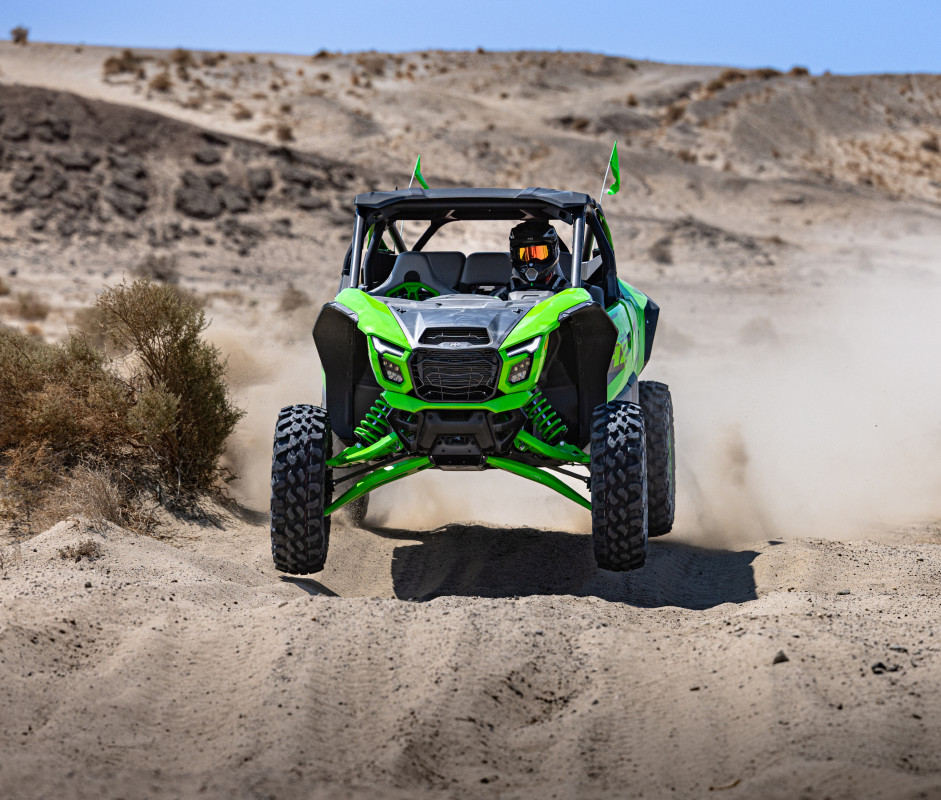
Justin Coffey
The unit is driven by a system of planetary gears rather than a belt and pulley, which allowed Kawasaki to multiply the speed of their forged aluminum impeller to 13.6 times the speed of the engine.
That means when the motor hits its stride at a screaming 9,000 rpm, the supercharger is spinning a staggering 130,000 times every minute, spiking the intake air speeds to 223 miles per hour. To put things into perspective, that’s roughly three times faster than the wind speeds of your average hurricane.
It’s Built To Last
Highly tuned engines rarely go the distance. However, this is a Kawasaki we’re talking about, and a Kawasaki inline-four at that. You could say these engines are something of a specialty of Kawasaki’s, considering they’ve spent the last 53 years perfecting them since the introduction of the Z1 back in 1972.
Take a proven formula you already know can take a lifetime of abuse, add the beefiest internals you can build, and you’ve got the H2’s four-banger. The crank, cams, pistons, and connecting rods are all painstakingly engineered to handle the increased heat and power of a supercharged drivetrain.
And that’s not the only measure Kawasaki took to ensure the H2 is as bombproof as possible. The same could be said for the H2’s cooling systems, which feature tandem stacked radiators and an 18-row oil cooler for the engine, plus an air-to-water intercooler for the supercharger that’s backed by an automatic fan that kicks on anytime the engine spins over 3,000 rpm.
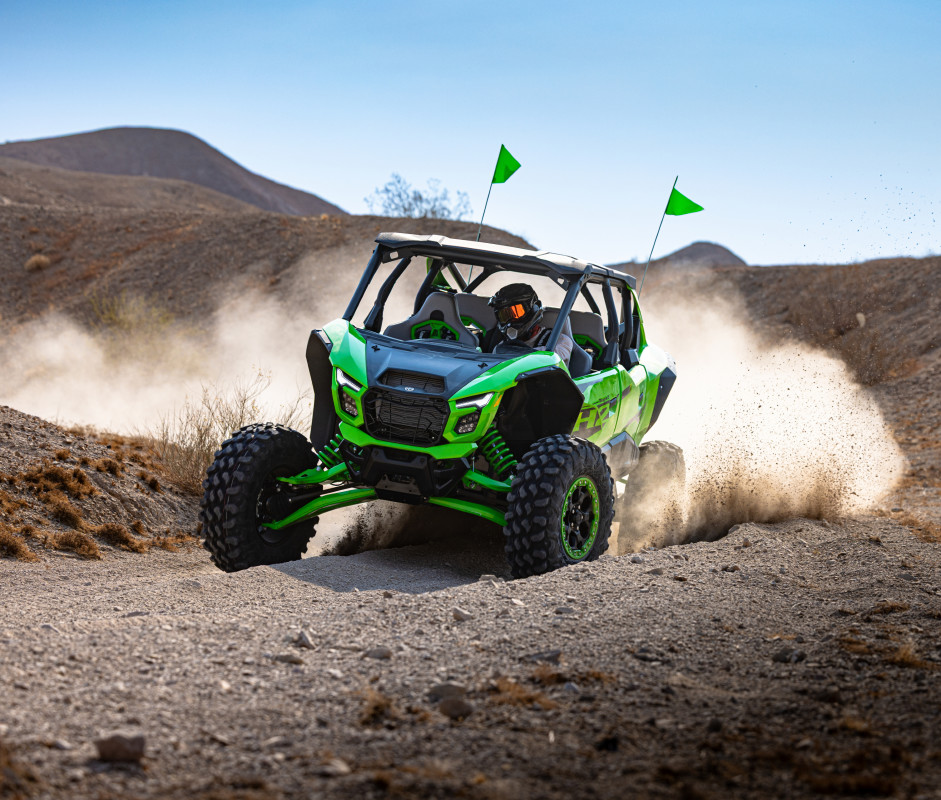
Justin Coffey
That same attention to detail was also applied to the H2’s CVT transmission, which gets its own filtered air intake just behind the passenger headrests. The CVT drive pulley also features intentionally angled fins designed to help draw in and circulate air for better cooling, as well as an added primary clutch collar to reduce wear from belt slack while also improving acceleration.
And then there’s the litany of underbody protection that comes standard on this rig. In addition to the massive control arms I mentioned before, the entire undercarriage is backed by a full-length skid plate, and additional steel reinforcements have been added on top of that around key components. The wheel wells are made from steel, the roll cage is incorporated as a stressed member of the chassis, and the entire underbody is angled to give maximum clearance over obstacles.
Creature Comforts
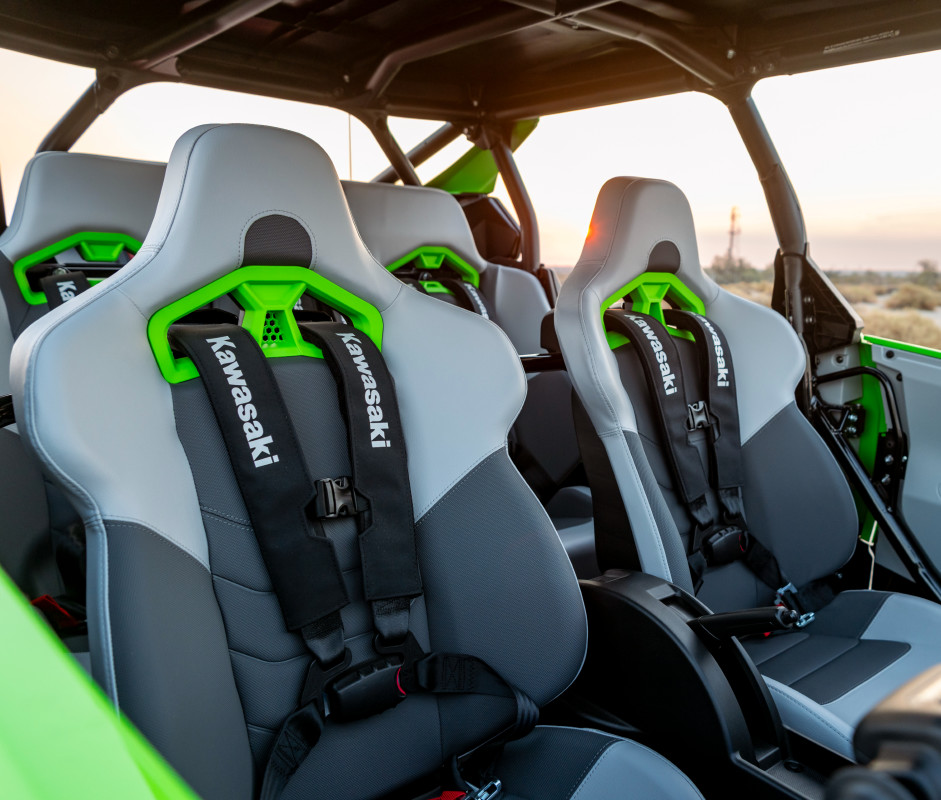
Logan Gallagher
A quick note on the interior of the Teryx H2: if you’re gonna spend $40,000 on an off-road toy, the interior better be at least as good as a $40,000 car. Once again, Kawasaki didn’t disappoint.
Every inch of the H2 interior looks and feels the business. The seats are made from bolstered two-tone material with grippy panels in the lower half, four-point harnesses come as standard for every seat in the cab, and the full color TFT dash is as bright and crisp as any road-going vehicle I’ve driven.
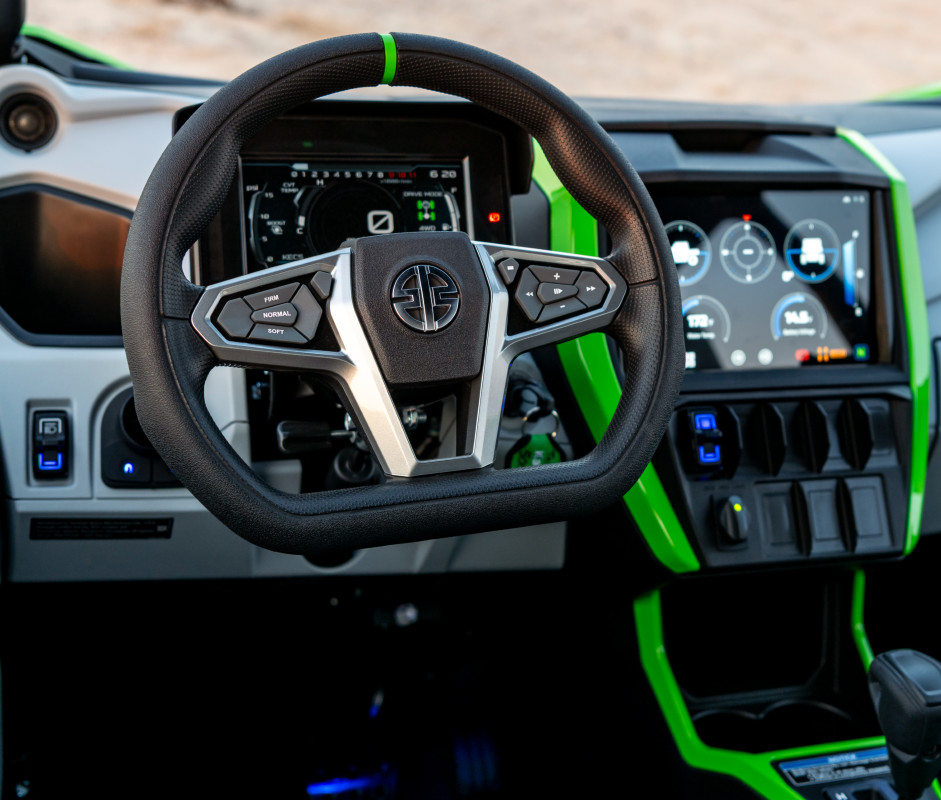
Logan Gallagher
Step up to the deluxe “eS” trim, and you’re treated to a Garmin Tread infotainment system, complete with a 10” full-color touchscreen display in the middle of the dash that puts premium navigation features front and center. The Garmin package also wirelessly connects to your smartphone for audio, which is routed through a six-speaker sound system that’s fully integrated into the H2’s doors and dashboard.
And while I spent most of my time behind the wheel of the H2, I’ll also share that after a brief stint in the backseat, I can confirm that every seat in the house is roomy enough for adults over six feet. The back also gets “stadium seating,” so your passengers are free to watch in horror as you succumb to the thrill of speed.
Complaint Department
Ok so the 2025 Kawasaki Teryx H2 is insanely fast, insanely well built, and just insanely good all around. Nothing will change the fact that I desperately want one, but I did log a few complaints worth sharing after a day in the driver’s seat.
The first is that Kawasaki stuck with a CVT transmission rather than going with a fancy dual-clutch, paddle-shifted setup like the latest Can-Am Maverick R. Yes, it’s a great transmission as far as CVTs go, but the thought of being able to drop two gears and blast off at full gas in this thing gives me chills in the best way possible.
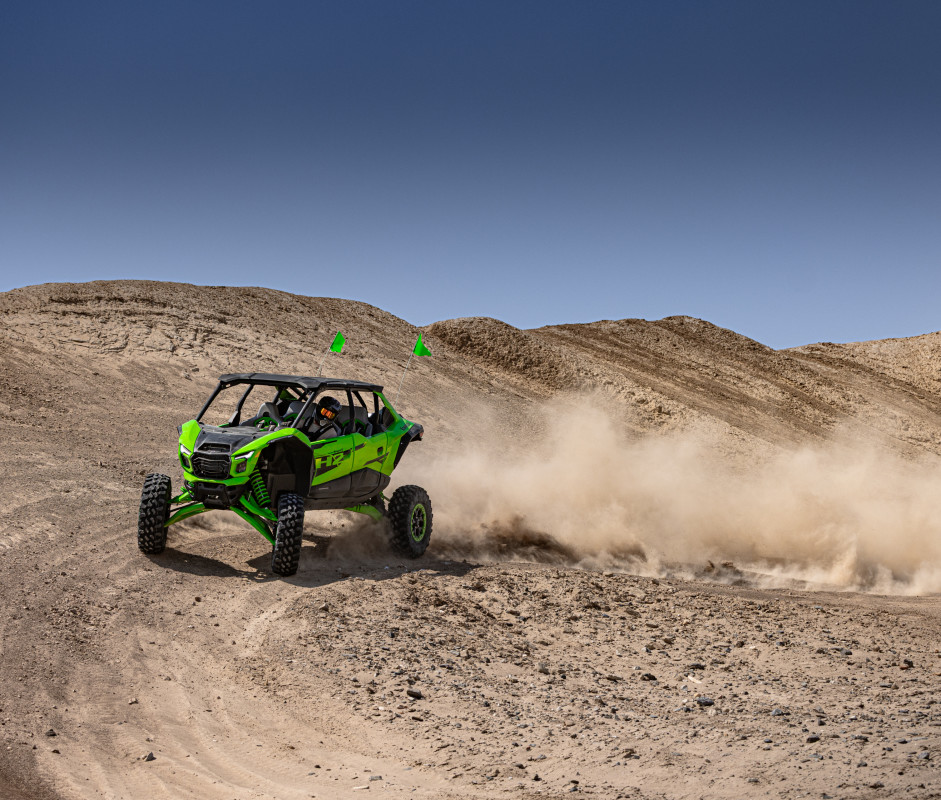
Justin Coffey
The second is Kawasaki’s choice of seatbelts in this machine. They’re nice four-point harnesses, but unfortunately they also employ an inertia-reel system just like any road-going car or truck.
On a rig this gnarly, it would make a lot more sense to run an adjustable four-point harness that keeps you glued securely to your seat at all times. Sometimes it’s nice to be able to get up off the seat when you’re bouncing over whoops or cresting a steep drop, but I’d prefer the tradeoffs of a fixed harness personally. I have no doubt the aftermarket will provide.
Last but not least, one thing I regularly noticed was that the Teryx H2 seemed to require a lot more input and correction in the steering to track a straight line than I’m used to. It never felt twitchy or unsteady, but it does seem to require a lot of attention when you’re letting the thing eat on a sandy open road.
Conclusion
The Kawasaki Teryx H2 is a windfall for those of us who go weak at the knees for obscene power and speed. Where we once had to choose between a Polaris Pro R 4 and a Can-Am Maverick R Max, there’s now a third option out there with its own unique appeal.
The H2 combines Kawasaki’s well-deserved reputation for reliability with industry-leading power and the visceral sound and thrill of a supercharged engine. What’s even more impressive, however, is that Kawasaki has also managed to build the most affordable and well-equipped rig in the segment.
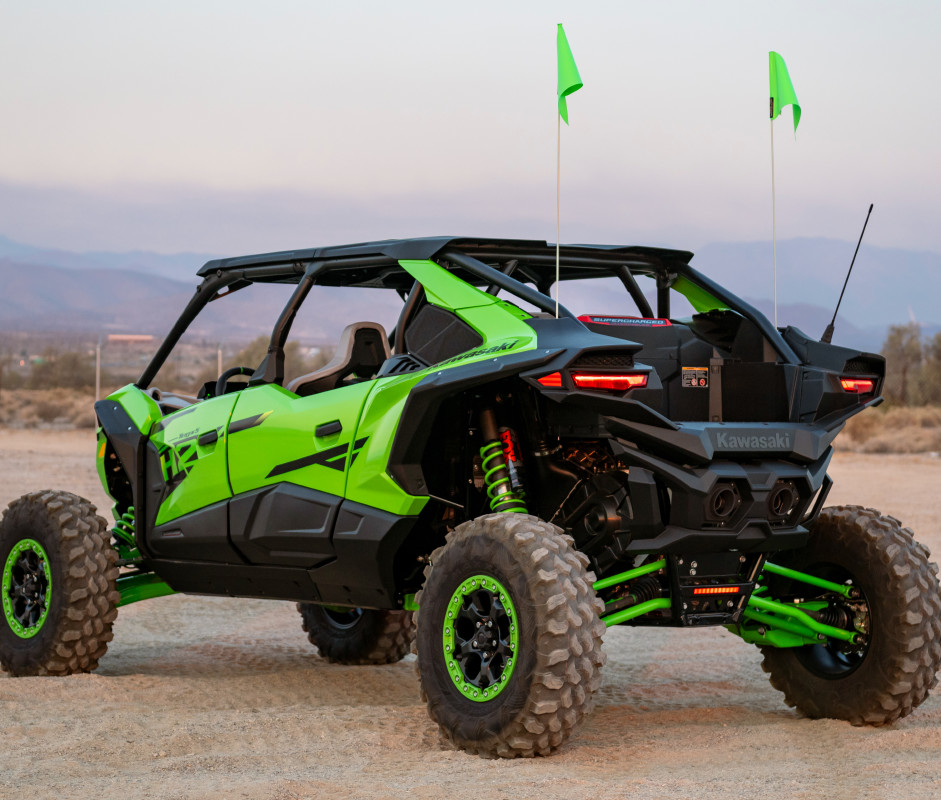
Logan Gallagher
Given the choice between a bare-bones Polaris RZR Pro R 4 Sport for $38,999, a $43,299 Can-Am Maverick R Max X, or a $37,199 Kawasaki Teryx4 H2, I can’t imagine going for anything other than the Kawasaki. It’s got more power and more advanced suspension than the alternatives, not to mention the sheer cool factor of the industry’s only whining, whistling, snarling supercharger.
The fact that you can step up to the peak Deluxe eS trim with Garmin infotainment and Fox Live Valve technology for just $43,199 drives the point home even further. If you want the biggest, baddest rig money can buy, numbers don’t lie. There can only be one machine on the market that leads the arms race in horsepower, and that machine is now built in Japan.
2026 Kawasaki Teryx H2 Specs
- Engine: Supercharged inline-four cylinder
- Displacement: 999cc
- Transmission: CVT
- Horsepower/Torque: 250 hp/146.3 lb-ft
- Ground Clearance:16.5 inches (standard)
- Fuel Capacity: 14.8 gallons
- Price: From $37,199
